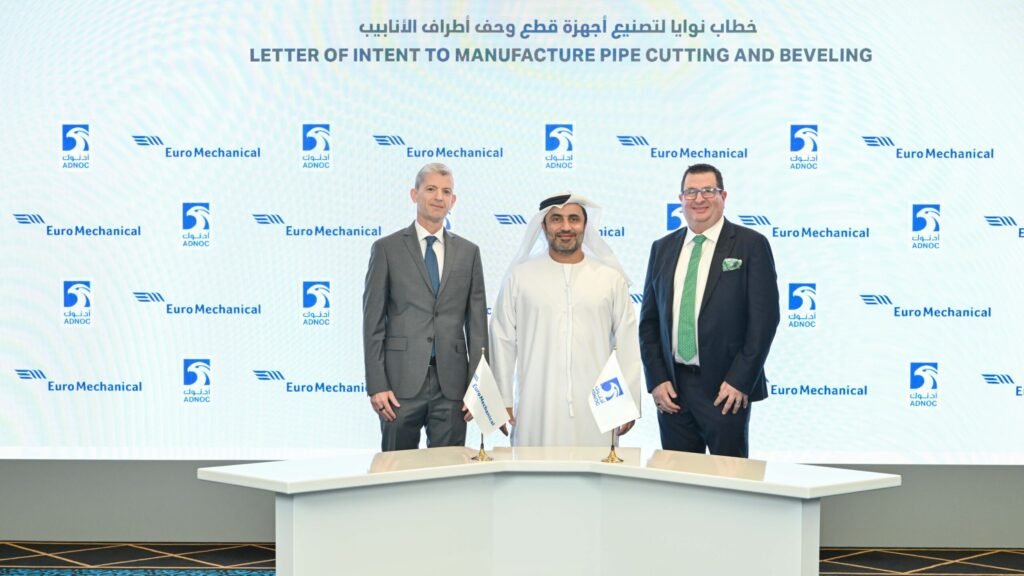Streamlining Operations, A Major Shutdown Case Study
ADNOC Offshore’s Zirku Island is a crucial center for oil and gas production in the United Arab Emirates, handling significant volumes of hydrocarbons for processing, storage, and export.The facility operates around the clock, ensuring the continuous flow of resources to meet domestic and international demands.

Project Overview
Euro Mechanical has long been recognized for its commitment to operational excellence in the energy sector. This case study focuses on a major shutdown project undertaken by Euro Mechanical, which showcases our ability to efficiently manage and execute complex projects, ensuring minimal downtime and maximized operational efficiency.
However, unforeseen circumstances, such as equipment failures, safety incidents, or regulatory requirements, can necessitate a major plant shutdown with minimal notice.
A Total Shutdown was carried out December 2023 for replacing piping sections up to 48” in diameter throughout the Upper Zakum/Satah Plant.
Problem Identity
In this scenario, a critical issue has arised that requires immediate attention, with only two months from award to completion, including a tight 78-hour execution window, leaving little time for preparation before the shutdown must commence.

Challenges
In the major shutdown case study of Euro Mechanical, the project faced several significant challenges that required expert handling to ensure its success. First, the tight deadlines to resume production posed a critical hurdle, as any downtime directly translated into substantial revenue loss. The project demanded precise and efficient execution to minimize the non-operational period, which is crucial for reducing financial impact and meeting market supply demands.

Another challenge involved managing extensive on-site operations while ensuring the safety of all personnel. Coordinating a large number of tasks and personnel simultaneously presents significant logistical challenges, especially in potentially hazardous environments typical of refinery operations. Rigorous safety management systems and constant vigilance were essential to prevent accidents and ensure the safety of the workforce.
Additionally, integrating new technology without compromising existing infrastructure was a delicate task. The project aimed to upgrade the facility with the latest technology, which had to work seamlessly with older, possibly outdated components. This required a balance to implement these upgrades without causing operational disruptions or long-term compatibility issues, which could affect the refinery’s overall efficiency and safety.
Addressing these challenges effectively was crucial for completing the shutdown project ensuring operational enhancements were achieved without compromising safety, efficiency, or financial viability.
Solutions
Rapid Response Teams
Dedicated teams are mobilized immediately to assess the situation, identify critical tasks, and develop an action plan for the shutdown. Cross-functional collaboration and clear communication channels are established to expedite decision-making.
Emergency Procurement
Emergency procurement procedures are activated to expedite the acquisition of required materials and services. Close coordination with vendors and suppliers helps ensure timely delivery and availability of necessary resources.
Prioritization of Activities
Essential maintenance tasks and safety-critical activities are prioritized to address the most urgent needs within the limited timeframe. Non-essential activities may be deferred or streamlined to focus resources where they are most needed.
Continuous Monitoring
Continuous Monitoring: Ongoing monitoring and evaluation of progress are essential to adapt to changing circumstances and optimize resource allocation. Real-time data and performance Results
12
12
ahead of schedule
resulting in significant
cost savings
15%
15%
in operational efficiency post-upgrade
1
1
underscoring our commitment to workplace safety and regulatory compliance.
Overall, the successful total shutdown brought numerous benefits to ADNOC Offshore, including improved asset integrity, enhanced safety performance, optimized production efficiency, cost savings, compliance assurance, stakeholder confidence, and long-term sustainability.

